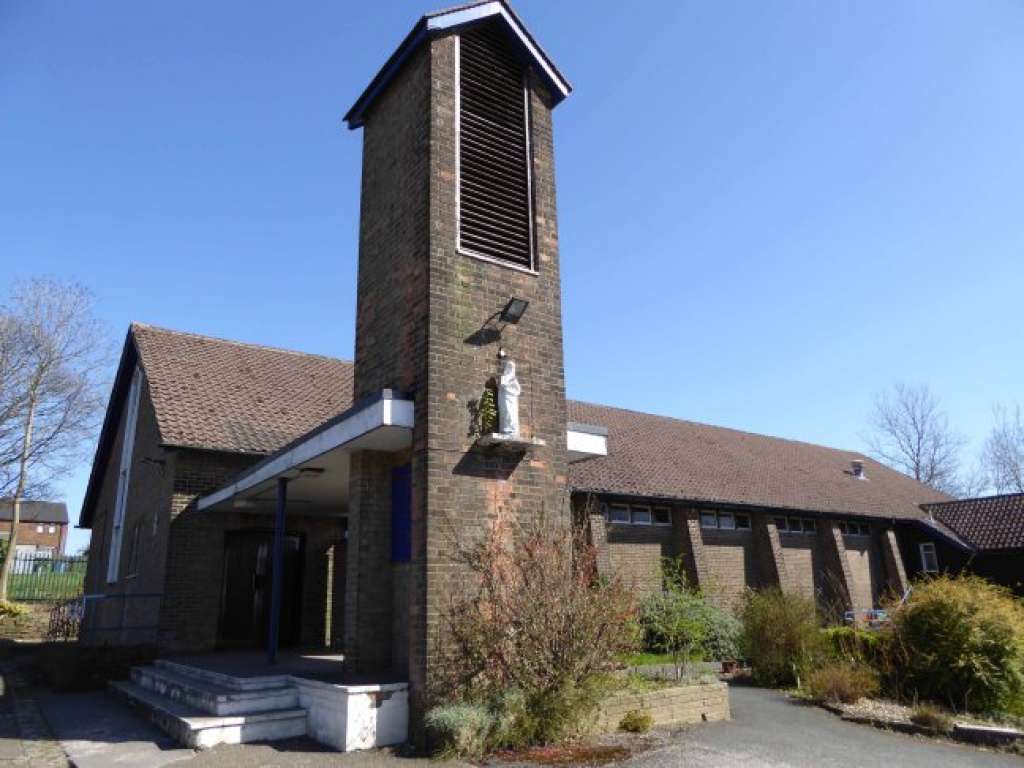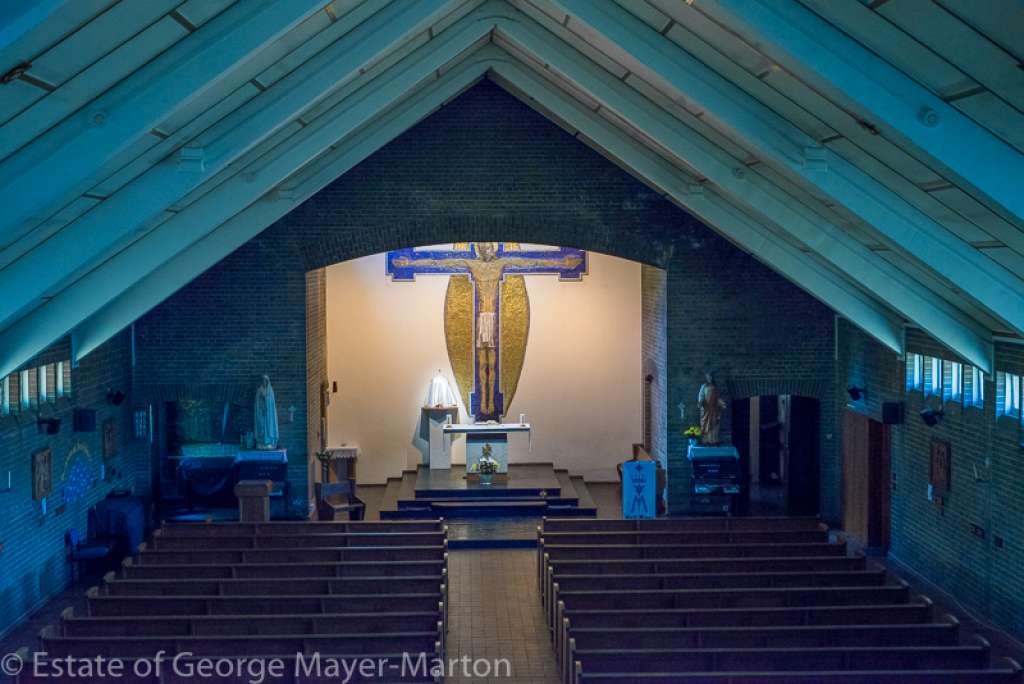PRESS RELEASE: Leading museums and galleries back national campaign to save Oldham mural of "dazzling beauty"
22nd December 2020
Leading national museums and galleries have backed the campaign to save "The Crucifixion" mural. The art work, currently being assessed for listing by Historic England, was completed in 1955 by Hungarian artist George Mayer-Marton and was designed for the Holy Rosary Church in Oldham.
Tristram Hunt, director of the renowned V&A Museum in London said: "The V&A regards ‘The Crucifixion’ … to be a remarkable example of Post-war mural art and the revival of the mosaic in Britain. It is also emblematic of the influence of European emigre modernists on British art.”
In the statement to SAVE he added, “A powerful interpretation of a common religious subject, it is a work of considerable importance for the history of British modernism… Far from a slavish imitation of the art of the past, his interpretation of Christian iconography in a modernist idiom is one of dazzling beauty. It is also testament to the enlightened Post-war ecclesiastical commissions of the Catholic Church awarded emigre artists from Central Europe."
The Victoria Gallery in Liverpool holds 20 of Mayer-Marton's paintings in its collection. Dr Amanda Draper, curator of art and exhibitions, in reference to the mural said: “It is crucial that this monument is saved for the nation and especially for the people of Oldham and the North West Region. Mayer-Marton is fast emerging as an important figure in post war art and exemplifies the way that emigres enriched Britain’s cultural landscape in the mid 20th century."
The Imperial War Museum has written to Historic England, the government's heritage advisors. In their letter curator Claire Brenard states: "[The mural] is a reminder that British culture was enriched by the contribution of a whole generation of artists who came to our country following Nazi persecution. The mural encompasses the pain that is never far away in Mayer-Marton’s work, but also complexity, the joyous and the divine. I speak on behalf of my colleagues at the museum in calling for the further tragedy – of losing one of the artist’s most important, and public, works – to be avoided. We wish for the mural to be fully conserved and a more permanent home to be found for it."
Karen MacKinnon, curator at the The Glynn Vivian Gallery in Swansea which holds over 40 works by Mayer-Marton wrote to Historic England stating: "We have no doubt that the time will come for a special focus on the work of this important emigre artist, and our hope is that Historic England will show the foresight to protect this mural."
Unusually made up of painted fresco and mosaic, the mural is located in Oldham's Church of the Holy Rosary - which has been redundant for over three years and is increasingly at risk and threatened by redevelopment.
The 7.5m long mural depicts the figure of Christ in golds and tans against a dark blue cross and gold mandorla. It was commissioned following the Festival of Britain when public art came to be seen as a symbol of civic renewal and social progress.
One of only two ecclesiastical murals by Mayer-Marton that survive in situ, this is the only one that incorporates both fresco and mosaic.
Henrietta Billings, director of SAVE Britain’s Heritage said: “Support from such high profile museums and galleries for the campaign highlights the huge importance of this mural for the North West and for Britain. The Oldham mural deserves protection and national recognition through listing, and SAVE has offered assistance to the Catholic church authorities help find a secure future for it - ideally within the building it was designed for."
Marcus Binney, executive president of SAVE said: "This remarkable mural is rapidly emerging as a major work of art. Our preferred option is for it to be restored in situ. The church is a simple barn like structure in need of maintenance and some repair but not expensive to maintain in the longer term. It was well built and carefully designed and detailed at a time of post war austerity."
The mosaic crucifixion was originally surrounded by wall paintings depicting the figures of Mary and John the Apostle against a background of various shades of blue. Historical photographs show that the wall painting extended over the entire wall, but in the 1980s the fresco element was painted over.
New evidence has concluded that the fresco remains intact under the paint and that it is possible to restore the mural to its original condition.
The significance of the mural has also been highlighted by a number of national experts including the Twentieth Century Society, the Ceramic and Architectural Tiles Association as well as several leading academics and architectural historians.
Mayer-Marton (born Hungary 1897, died Liverpool 1960) was a leading figure in the Viennese art world in the 1920s and 1930s. He and his wife escaped to Britain in 1938, where he began working as a lecturer for CEMA, the predecessor of Arts Council. In 1952 he was appointed as a lecturer at the Liverpool College of Art. There he established the Department of Mural Art. The course in this technique which he instigated at the College was the first of its kind in the UK.
During his time at the college Mayer-Marton completed more than 200 oil paintings and he was commissioned by the Roman Catholic Church to carry out works at a number of churches in Lancashire and Cheshire, completing numerous frescoes and mosaics, one of which, the Pentecost, now resides in the Metropolitan Church of Christ the King in Liverpool.
The Byzantine mosaic method Mayer-Marton employed is believed to be its first use in this country. This mural is one of only two ecclesiastical murals by Mayer-Marton that survive in situ and the only one that incorporates both fresco and mosaic.
ENDS
Note to editors
1. For more information and images contact Henrietta Billings, director of SAVE Britain's Heritage: office@savebritainsheritage.org / 07388 181 181.
2. SAVE Britain’s Heritage has been campaigning for historic buildings since its formation in 1975 by a group of architectural historians, writers, journalists and planners. It is a strong, independent voice in conservation, free to respond rapidly to emergencies and to speak out loud for the historic built environment.



